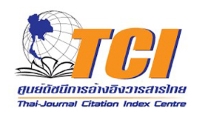JOURNAL DETAIL
Optimal Rain Gauge Network Design and Spatial Precipitation Mapping based on Geostatistical Analysis from Co-located Elevation and Humidity Data
Paper Type |
Contributed Paper |
Title |
Optimal Rain Gauge Network Design and Spatial Precipitation Mapping based on Geostatistical Analysis from Co-located Elevation and Humidity Data |
Author |
Aksara Putthividhya *[a] and Kenji Tanaka [b] |
Email |
dr.aksara.putthividhya@gmail.com |
|
Abstract: Measured rainfall data are important to many problems in hydrologic analysis and watershed management. The accurate estimation of the spatial distribution of rainfall requires a dense network of instruments, which entails large installation and operational costs. It is thus necessary to optimize the number of rainfall stations and estimate point precipitation at unrecorded locations from existing valued data. This paper serves 2 objectives: i) to establish a spatial representative rainfall stations from the entire existing network in the study area (i.e., rainfall-data optimization); and ii) to use of multivariate geostatistical algorithm for incorporating relatively cheaper elevation, humidity, and temperature data into the spatial prediction of rainfall at the study site. Yom river is the upstream control for the main |
|
Start & End Page |
187 - 197 |
Received Date |
2012-02-28 |
Revised Date |
|
Accepted Date |
2012-08-27 |
Full Text |
Download |
Keyword |
Geostatistics, kriging, multivariate, rain gauge network, spatial interpolation |
Volume |
Vol.40 No.2 (APRIL 2013) |
DOI |
|
Citation |
*[a] A.P. and [b] K.T., Optimal Rain Gauge Network Design and Spatial Precipitation Mapping based on Geostatistical Analysis from Co-located Elevation and Humidity Data, Chiang Mai Journal of Science, 2013; 40(2): 187-197. |
| View:780 Download:285 | |
RELATED ARTICLE
Article ID: e2023015
Author:Purintorn Chanlert, Wiparat Manoma, Aneeta Jintara, Thanate Kerdkaew and Thana Sutthibutpong
Vol.50 No.2 (March 2023) View: 2,054 Download:438
page: 1297 - 1309
Author:Ahmad Fauzi Raffee, Hazrul Abdul Hamid*, Siti Nazahiyah Rahmat and Muhammad Ismail Jaffar
Vol.47 No.6 (November 2020) View: 1,023 Download:383
page: 160 - 174
Author:Chanida Krongchai, Sakunna Wongsaipun, Sujitra Funsueb, Parichat Theanjumpol, Jaroon Jakmunee and Sila Kittiwachana
Vol.47 No.1 (January 2020) View: 972 Download:545
Copyrights © Since 2021 All Rights Reserved by Chiang Mai Journal of Science










